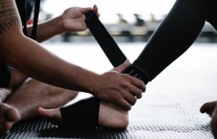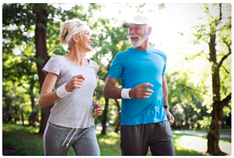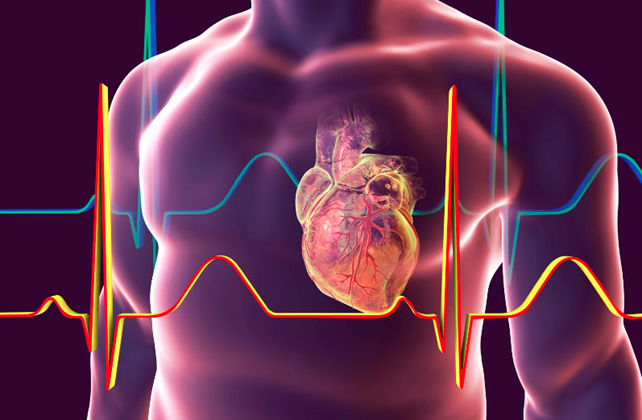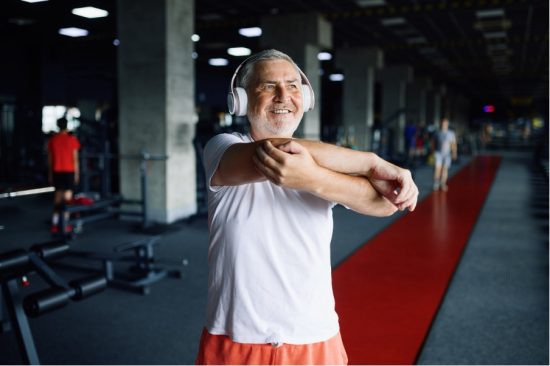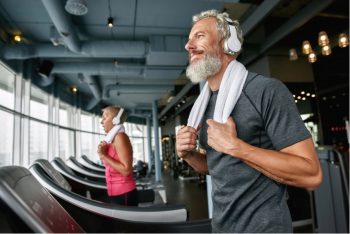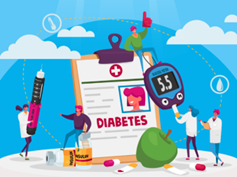30 Best and Most Popular Beginners’ Gym Exercises
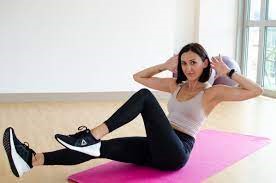
30 Best and Most Popular
Beginners’ Gym Exercises
If you’re new to the gym, it can be difficult to know where to start. With so many exercises to choose from, it’s important to have a basic understanding of some of the most common of gym exercises. In this article, we’ll introduce you to more than 30 Popular Beginners’ Gym Exercises to help you get started on your fitness journey.
Understanding gym exercises is important because it allows you to target specific muscle groups and achieve your fitness goals more effectively. Starting with the basics is a great way to build a strong foundation and ensure proper form and technique.
Don’t worry, and don’t be intimidated.
Going to the gym for the first time can be intimidating, especially if you’re not familiar with the various exercises and equipment available. But don’t worry, with a little bit of knowledge and practice, you’ll soon be on your way to achieving your fitness goals.
30 Best and Most Popular Beginners’ Gym Exercises: Key Takeaways
- Understanding gym exercises is important for targeting specific muscle groups and achieving your fitness and weight-loss goals.
- Starting with the basics is a great way to build a strong foundation and ensure proper form and technique.
- We’ll cover over 30 of the most common gym exercises, including lower body, upper body, and core strength exercises, as well as equipment-based exercises and advanced training techniques.

Understanding 30 Best and
Most Popular Beginners’ Gym Exercises
When it comes to gym exercises, there are many different types to choose from, each targeting different muscle groups and fitness goals. Some exercises focus on building strength, while others aim to increase endurance or flexibility. All of these exercise will also contribute to losing weight if weight loss is also part of your target.
Strength Training
Strength training exercises are designed to build muscle and increase overall strength. These exercises typically involve using weights or resistance machines, and target major muscle groups such as the chest, back, legs, and arms. Examples of strength training exercises include bench press, squats, deadlifts, and bicep curls.
Endurance exercises
Endurance exercises, on the other hand, are designed to improve cardiovascular health and increase stamina. These exercises typically involve using aerobic equipment such as treadmills, ellipticals, or stationary bikes. Examples of endurance exercises include running, cycling, and swimming.
Flexibility exercises
Flexibility exercises focus on improving range of motion and reducing the risk of injury. These exercises can be done using body weight or with the help of equipment such as resistance bands or yoga blocks. Examples of flexibility exercises include stretching, yoga, and Pilates.
When it comes to choosing which exercises to include in your workout routine, it’s important to consider your fitness goals and the muscle groups you want to target. The American Council on Exercise recommends including exercises that target major muscle groups, as well as exercises that work multiple muscle groups at once.
***
In summary, understanding gym exercises is key to achieving your fitness goals. Whether you’re looking to build strength, increase endurance, or improve flexibility, there are a variety of exercises and equipment available to help you reach your goals. Just remember to start slow, listen to your body, and always consult with a fitness professional if you have any questions or concerns.
Starting with the Basics
If you’re new to the gym, it’s important to start with the basics. This means focusing on exercises that are easy to learn and that work multiple muscle groups at once. Here are a few exercises that are great for beginners:
Squats
 Squats are a great exercise for building leg strength and improving balance. To perform a squat, stand with your feet shoulder-width apart and your toes pointing forward. Lower your body down as if you’re sitting in a chair, keeping your back straight and your knees behind your toes. Return to the starting position and repeat.
Squats are a great exercise for building leg strength and improving balance. To perform a squat, stand with your feet shoulder-width apart and your toes pointing forward. Lower your body down as if you’re sitting in a chair, keeping your back straight and your knees behind your toes. Return to the starting position and repeat.
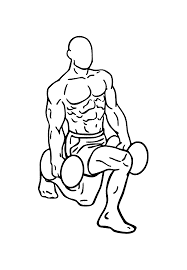
Lunges
Another effective lower body exercise is lunges. Lunges are a unilateral exercise that target the quads, hamstrings, and glutes. There are many variations of lunges, including walking lunges, reverse lunges, and lateral lunges.
To target the glutes specifically, exercises such as glute bridges and hip thrusts can be performed. These exercises activate the posterior chain and can help to develop a strong and shapely butt.
In addition to these exercises, there are many other lower body exercises that can be performed to increase leg strength and overall lower body development.
Some of these exercises include:
Deadlifts
 Deadlifts are one of the best exercises for building overall strength and improving posture. To perform a deadlift, stand with your feet shoulder-width apart and your toes pointing forward. Bend down and grab a barbell with your hands shoulder-width apart. Lift the barbell up to your waist, keeping your back straight and your knees behind your toes.
Deadlifts are one of the best exercises for building overall strength and improving posture. To perform a deadlift, stand with your feet shoulder-width apart and your toes pointing forward. Bend down and grab a barbell with your hands shoulder-width apart. Lift the barbell up to your waist, keeping your back straight and your knees behind your toes.
Before you start any exercise routine, it’s important to warm up properly. This will help prevent injury and prepare your body for the workout ahead. A good warm-up should include light cardio, stretching, and mobility exercises.
Bulgarian split squats
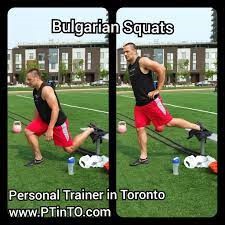
Step-ups

Calf Raises
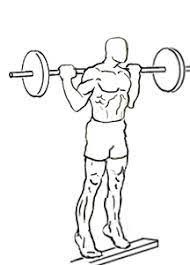
Leg press:30 Popular Beginners’ Gym Exercises
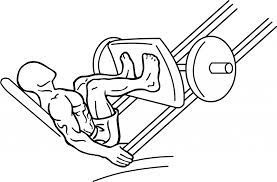 Incorporating a variety of lower body exercises into your workout routine can help to prevent boredom and ensure that all muscle groups are being targeted. When performing lower body exercises, it is important to maintain proper form and avoid using too much weight, which can lead to injury.
Incorporating a variety of lower body exercises into your workout routine can help to prevent boredom and ensure that all muscle groups are being targeted. When performing lower body exercises, it is important to maintain proper form and avoid using too much weight, which can lead to injury.
Upper Body Exercises:
30 Beginners’ Gym Exercises
When it comes to upper body exercises, there are a lot of options to choose from. Here are 15 of the most common gym exercises that target your chest, shoulders, triceps, biceps, lats, forearms, and more:
- Pushups:
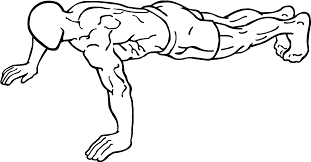
Push Ups This classic exercise targets your chest, shoulders, and triceps. It’s a great way to build upper body strength without any equipment
- Bench Press:
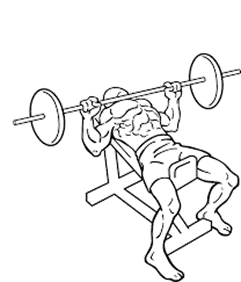
Bench Press This exercise is a staple in any gym routine. It targets your chest, shoulders, and triceps and can be done with a barbell or dumbbells.
- Shoulder Press:
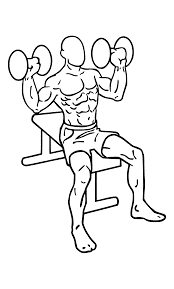
Shoulder Press This exercise targets your shoulders and can be done with dumbbells or a barbell.
- Dips:

Dips This exercise targets your triceps and can be done using parallel bars or a bench.
- Pullups:
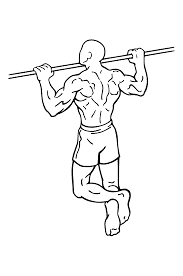
Pull Ups This exercise targets your lats, biceps, and forearms. It can be done using a pullup bar or assisted pullup machine.
- Lat Pulldowns:
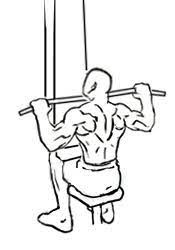
Lateral Pull Downs This exercise targets your lats and can be done using a lat pulldown machine or resistance bands.
- Bicep Curls:
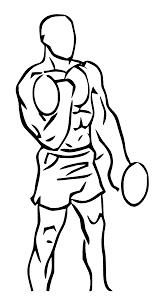
Bicep Curls This exercise targets your biceps and can be done using dumbbells or a barbell.
- Tricep Extensions:

Overhead Triceps Extension This exercise targets your triceps and can be done using dumbbells or a cable machine.
- Standing Barbell Curl:

Step Ups This exercise targets your biceps and can be done using a barbell.
- Chest Flies:
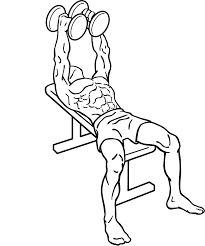
Chest Flies This exercise targets your chest and can be done using dumbbells or a cable machine.
- Incline Bench Press
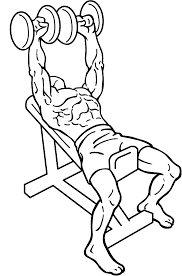
Incline Bench Press This exercise targets your upper chest and can be done using a barbell or dumbbells.
- Close Grip Bench Press
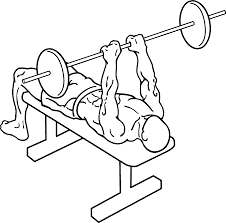
Close Grip Bench Press This exercise targets your triceps and can be done using a barbell.
- Overhead Tricep Extension:
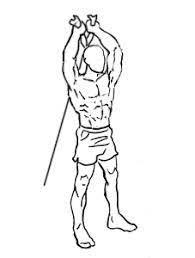
Overhead Tricep Extension This exercise targets your triceps and can be done using dumbbells or a cable machine.
- Reverse Fly:
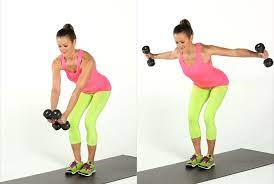 This exercise targets your rear deltoids and can be done using dumbbells or a cable machine.
This exercise targets your rear deltoids and can be done using dumbbells or a cable machine. - Hammer Curls:

Hammer Curls 1 
This exercise targets your biceps and forearms and can be done using dumbbells or a cable machine.
Incorporating these upper body exercises into your gym routine can help you build strength and muscle in your chest, shoulders, arms, and back. Remember to use proper form and start with light weights before increasing the weight as you progress.
Core Strength Exercises: 30 Best and Most
Popular Beginners’ Gym Exercises
A strong core is essential for overall fitness and injury prevention. Core exercises target the muscles in your abdominals, lower back, and obliques. Here are some of the most effective exercises for building core strength:
Planks

Planks are a classic core exercise that targets the entire core, including your abs, lower back, and obliques. To perform a plank, start in a high plank position with your hands directly under your shoulders and your body in a straight line from head to heels. Hold this position for as long as you can, making sure to keep your core engaged and your hips level.
Side Planks

The exercise “Side planks” are a variation of the planks that target your obliques, the muscles on the sides of your core. To perform a side plank, start in a high plank position and then shift your weight onto your right hand and the outer edge of your right foot. Stack your left foot on top of your right foot and then lift your left arm towards the ceiling. Hold this position for as long as you can and then switch sides.
Abdominal Crunches

These Abdominal crunches are a classic core exercise. They target the resistance abdominal muscles that run down the front of your abdomen. To perform an abdominal muscle crunch, lie on your back with your knees bent and your feet flat on the floor. Place your hands behind your head and then lift your head, shoulders, and upper back off the ground. Hold for a moment and then lower back down.
Bicycle Crunches

A Bicycle crunch is a variation of the abdominal crunch that targets your obliques. To perform a bicycle crunch, lie on your back with your knees bent and your hands behind your head. Lift your head, shoulders, and upper back off the ground and then bring your right elbow towards your left knee while straightening your right leg. Switch sides and repeat.
Russian Twists
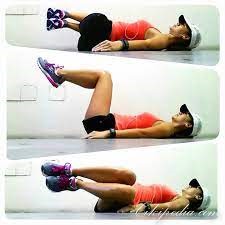
Exercises known as Russian twists are a challenging exercises that target your obliques. To perform a Russian twist, sit on the ground with your knees bent and your feet flat on the floor. Lean back slightly and then lift your feet off the ground. Hold a weight or medicine ball with both hands and then twist your torso to the right, bringing the weight towards your right hip. Twist back to center and then repeat on the left side.
Incorporating these core exercises into your workout routine will help you build a strong and stable core, which can improve your overall fitness and help prevent injuries. Remember to always engage your core muscles during these exercises and to maintain proper form to avoid injury.
Equipment Based Exercises
30-best-and-most-popular-beginners-gym-exercises
Incorporating equipment into your workout routine can help you build strength and target specific muscle groups. Here are some common equipment-based exercises you might find in a gym:
Dumbbell Exercises: 30 Popular Beginners’ Gym Exercises

A Dumbbell is a weighty and versatile piece of equipment that can be used for a variety of exercises. Some popular dumbbell exercises include:
- Dumbbell bench press
- Dumbbell bicep curl
- Dumbbell shoulder press
- Dumbbell lunges
- Dumbbell flys
All of these exercises are illustrated in previous sections above, but without the inclusion of a dumbbell.
Barbell Exercises

A staple piece of Gym Equipment, the Barbell is great for building overall strength and power. Here are some common barbell exercises:
- Deadlifts
- Squats
- Bench press
- Barbell rows
- Overhead press
All of these exercises are illustrated above, but without the inclusion of a dumbbell.
Kettlebell Exercises
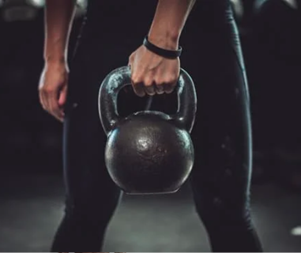
A hefty Kettlebell is a great tool for building strength and endurance. Here are some popular kettlebell exercises:
- Kettlebell swings
- Goblet squats
- Kettlebell snatches
- Turkish get-ups
- It’s important to maintain proper form when using equipment to avoid injury. Make sure to start with a weight that is comfortable for you and gradually increase the weight as you get stronger.
Some Advanced Training Techniques
Once you’ve been working out for a while, you may find that you want to take your training to the next level. Advanced training techniques can help you break through plateaus and build strength and muscle. Here are descriptions of some of the most common advanced training techniques:
Supersets
Supersets involve performing two exercises back-to-back with no rest in between. This technique can help you increase intensity and work volume when time is limited. For example, you could perform a set of bench presses followed immediately by a set of rows.
Drop Sets
Drop sets involve performing a set of an exercise to failure, then immediately reducing the weight and continuing the set. This technique can help you increase time under tension and build muscle endurance. For example, you could perform a set of bicep curls with a heavy weight, then immediately switch to a lighter weight and continue the set.
Rest-Pause Training
Rest-pause training involves performing a set of an exercise to failure, then taking a short rest before continuing the set. This technique can help you increase intensity and work volume. For example, you could perform a set of pull-ups to failure, rest for 10 seconds, then continue the set.
Forced Reps
Forced reps involve performing a set of an exercise t failure, then having a partner assist you in performing additional reps. This technique can help you increase intensity and work volume. For example, you could perform a set of squats to failure, then have a partner assist you in performing a few more reps.
Negatives
Negatives involve performing the eccentric (lowering) portion of an exercise with a heavier weight than you could lift concentrically (lifting). This technique can help you build strength and muscle. For example, you could perform a set of chin-ups by jumping up to the top position, then lowering yourself as slowly as possible.
Compound Sets
Compound sets involve performing two exercises for the same muscle group back-to-back with no rest in between. This technique can help you increase intensity and work volume. For example, you could perform a set of lunges followed immediately by a set of squats.
Range of Motion Training
Range of motion training involves performing an exercise through a greater range of motion than you normally would. This technique can help you increase flexibility and build muscle. For example, you could perform a set of squats by lowering yourself all the way down until your hamstrings touch your calves.
Isometric Holds
Isometric holds involve holding a static position for an extended period of time. This technique can help you build strength and muscle endurance. For example, you could perform a set of planks by holding the top position for as long as possible.
These are just a few of the many advanced training techniques you can use to take your workouts to the next level. Incorporate them into your routine as needed to keep making progress.
Preventing and Dealing with Injuries: 30 Popular Beginners’ Gym Exercises
When it comes to gym exercises, injuries can happen. However, there are steps you can take to prevent injuries and deal with them if they do occur. Here are some tips to help keep you safe and healthy:
Preventing Injuries
- Warm-up: Before starting any exercise, take a few minutes to warm up your muscles. This can include light cardio or dynamic stretching.
- Use Proper Form: Make sure you are using proper form for each exercise. This will help prevent injuries and also ensure that you are targeting the right muscles.
- Start Slowly: If you are new to exercise or trying a new exercise, start slowly and gradually increase the intensity. This will help prevent injuries and also reduce muscle soreness.
- Listen to Your Body: If you experience pain or discomfort during an exercise, stop immediately. Continuing to exercise through pain can lead to injuries.
- Rest and Recover: Allow your body time to rest and recover between workouts. This will help prevent overuse injuries and also allow your muscles to repair and grow.
Dealing with Injuries
- Stop Exercising: If you experience pain or discomfort during an exercise, stop immediately. Continuing to exercise through pain can make the injury worse.
- Ice and Elevate: If you experience swelling, ice the affected area and elevate it above your heart. This can help reduce swelling and pain.
- Seek Medical Attention: If you experience severe pain or if the injury does not improve after a few days, seek medical attention. A healthcare professional can help diagnose the injury and recommend the appropriate treatment.
- Modify Exercises: After an injury, modify exercises to avoid aggravating the injury. This can include using lighter weights, reducing the range of motion, or avoiding certain exercises altogether.
- Gradual Return to Exercise: Once the injury has healed, gradually return to exercise. Start with low-intensity exercises and gradually increase the intensity and duration.
Remember, prevention is key when it comes to injuries. By taking the necessary precautions and listening to your body, you can help prevent injuries and stay healthy and fit.
Exercise and Aging
As you age, regular exercise becomes increasingly important for maintaining your overall health and well-being. Exercise can help you maintain a healthy weight, improve your cardiovascular health, and reduce your risk of developing chronic diseases such as diabetes, heart disease, and certain types of cancer.
In addition to the physical benefits, exercise can also improve your mental health and cognitive function. Studies have shown that exercise can reduce symptoms of anxiety and depression, improve memory and concentration, and even reduce your risk of developing dementia.
However, it’s important to keep in mind that as you age, your body may not be able to handle the same level of intensity and impact as it did when you were younger. It’s important to choose exercises that are appropriate for your fitness level and take into account any physical limitations you may have.
Some exercises that are particularly beneficial for older adults.
They include:
- Strength training: Strength training can help you maintain muscle mass and bone density, which can help prevent falls and fractures. It can also improve your posture and coordination.
- Balance exercises: Balance exercises can help improve your stability and reduce your risk of falling. Examples include standing on one foot or walking heel-to-toe.
- Low-impact aerobic exercises: Low-impact exercises such as walking, cycling, and swimming can help improve your cardiovascular health without putting too much stress on your joints.
- Yoga or Pilates: These exercises can help improve your flexibility, balance, and posture, as well as reduce stress and improve mental health.
Remember to always consult with your healthcare provider before starting a new exercise program, especially if you have any underlying health conditions or concerns. They can help you determine what types of exercises are safe and appropriate for you, and may even be able to recommend specific exercises or modifications to help you get the most out of your workouts.
The Role of Cardiovascular Exercise
Cardiovascular exercise, also known as cardio, is any exercise that increases your heart rate and respiration, and improves your endurance. It is an essential part of any fitness routine as it helps to strengthen your heart, lungs, and circulatory system, and reduce the risk of heart disease, stroke, and other chronic illnesses.
There are many types of cardio exercises, including walking, running, jogging, swimming, cycling, and rowing. Each of these exercises has its benefits and can be tailored to your fitness level and goals. For example, walking is an excellent low-impact exercise that can help to improve your endurance and burn calories, while swimming is a full-body workout that can improve your cardiovascular health and muscle tone.
Strength Training and Cardiovascular exercise
Cardiovascular exercise can also improve your performance in other areas of fitness, such as strength training. By improving your endurance, you will be able to work out for longer periods, lift heavier weights, and recover more quickly between sets.
To get the most out of your cardiovascular exercise routine, it is essential to find a type of exercise that you enjoy and can stick to long-term. You should also aim to gradually increase the intensity and duration of your workouts over time to continue challenging your body and improving your fitness level.
In summary, cardiovascular exercise plays a crucial role in any fitness routine, helping to improve your heart health, endurance, and overall fitness level. By incorporating cardio into your workouts, you can reduce your risk of chronic illnesses and improve your performance in other areas of fitness.
Psychological Benefits of Exercise
30 Beginners’ Gym Exercises
In addition to the physical benefits, engaging in regular exercise can also have a significant impact on your mental health and well-being. Here are some of the psychological benefits that you can expect to experience when you start incorporating exercise into your routine:
Improved Mood
Exercise has been shown to have a positive effect on mood, helping to alleviate symptoms of anxiety and depression. When you exercise, your body releases endorphins, which are hormones that can help to boost your mood and reduce feelings of stress and anxiety.
Increased Self-Esteem
When you set fitness goals and work towards achieving them, you can experience a sense of accomplishment and pride in your physical abilities. This can help to increase your self-esteem and confidence in yourself.
Reduced Stress: 30 Popular Beginners’ Gym Exercises
Exercise can also help to reduce feelings of stress and tension. When you engage in physical activity, you can release built-up tension in your muscles and clear your mind, helping you to feel more relaxed and at ease.
Improved Body Image
Regular exercise can also help to improve your body image and increase your satisfaction with your physical appearance. When you engage in physical activity, you can tone and strengthen your muscles, which can help you to feel more confident and comfortable in your own skin.
Increased Energy
Engaging in regular exercise can also help to increase your energy levels and combat feelings of fatigue. When you exercise, your body releases adrenaline and other hormones that can help to boost your energy levels and improve your overall sense of well-being.
By incorporating regular exercise into your routine, you can experience these and many other psychological benefits that can help to improve your mental health and well-being. So why not start today?
Understanding Exercise Intensity and Repetition
When it comes to gym exercises, understanding exercise intensity and repetition is key to achieving your fitness goals. Exercise intensity measures how much energy you use to work out. It is the “I” in the F.I.T.T. (Frequency, Intensity, Time, Type) Principle, a set of guidelines that can help you set up a workout routine.
Intensity: 30 Popular Beginners’ Gym Exercises
The intensity of your workout is determined by how hard you are working during exercise.
Repetition, on the other hand, refers to the number of times you perform a specific exercise. A repetition (rep) is one completion of an exercise, such as one deadlift, one bench press, or one arm curl. The number of repetitions you perform in a set is called the rep range.
Beginners – Don’t Get Ahead of Yourselves!
The intensity and rep range you choose will depend on your fitness goals. If you are a beginner looking to build muscle, stability, and endurance, use a lighter weight and do fewer sets with high repetitions. Two or three sets of 12 to 20 reps are recommended. If your goal is to grow muscle, do more sets with a moderate amount of repetitions (for instance, four sets of 10 to 12 reps each). You can build muscle with a wide range of repetitions and weights, but volume (total number of reps) is key.
Strength Building: 30 Best and Most Popular Beginners’ Gym Exercises
Strength training is an important part of any workout routine. Do strength training for all major muscle groups at least two times a week. One set of each exercise is enough for health and fitness benefits. Use a weight or resistance level heavy enough to tire your muscles after about 12 to 15 repetitions.
In summary, understanding exercise intensity and repetition is essential for achieving your fitness goals. The intensity and rep range you choose will depend on your fitness goals, but remember to prioritize strength training for all major muscle groups at least two times a week.

Bodybuilding and Weightlifting:
30 Most Popular Beginners’ Gym Exercises
If you’re looking to build muscle and increase your strength, bodybuilding and weightlifting exercises are a great place to start. These exercises are designed to target specific muscle groups and help you build mass and increase your overall fitness levels.
One of the most popular bodybuilding exercises is the barbell bench press. This exercise is great for building strength in your chest, shoulders, and triceps. To perform this exercise, lie on a bench with your feet flat on the floor and your back arched. Grasp the bar with an overhand grip and lower it to your chest before pushing it back up to the starting position.
Cable Crossover
Another popular exercise is the cable crossover. This exercise is great for building strength in your chest and shoulders. To perform this exercise, stand with your feet shoulder-width apart and grasp the handles of a cable machine. Bring your arms together in front of your chest before slowly lowering them back to the starting position.
Bodybuilding and weightlifting exercises can help you build muscle and increase your overall fitness levels. Incorporating these exercises into your workout routine can help you achieve your fitness goals and improve your overall health.
Medical Conditions and Exercise
If you have a medical condition, it is important to consult with your doctor before starting an exercise program. In some cases, exercise can help manage certain medical conditions, while in other cases, exercise may need to be modified or avoided altogether. Here are some common medical conditions and how exercise can affect them:
High Blood Pressure
30 Beginners’ Gym Exercises
Regular exercise can help lower blood pressure and reduce the risk of developing high blood pressure. Activities such as walking, cycling, and swimming can be beneficial. However, it is important to avoid exercises that involve holding your breath or straining, such as weightlifting.
High Cholesterol
Exercise can help increase high-density lipoprotein (HDL) cholesterol, which is the “good” cholesterol that helps remove low-density lipoprotein (LDL) cholesterol from the bloodstream. Activities such as running, cycling, and swimming can be effective. Resistance training can also be beneficial.
Osteoporosis
Weight-bearing exercises such as walking, running, and weightlifting can help increase bone density and reduce the risk of fractures. However, it is important to avoid exercises that involve twisting or bending forward, as these can increase the risk of spinal fractures.
Type II Diabetes
Exercise can help improve insulin sensitivity and blood sugar control. Activities such as walking, cycling, and swimming can be effective. Resistance training can also be beneficial.
Depression

Regular exercise can help improve mood and reduce symptoms of depression. Activities such as walking, running, and cycling can be effective. Group exercise classes can also be beneficial for social support.
Fibromyalgia
Low-impact exercises such as walking, cycling, and swimming can help reduce pain and improve function in people with fibromyalgia. Gentle stretching and yoga can also be beneficial.
Heart Disease
Regular exercise can help improve cardiovascular health and reduce the risk of heart disease. Activities such as walking, running, and cycling can be effective. Resistance training can also be beneficial.
Cold and Flu
Moderate exercise can help boost the immune system and reduce the risk of colds and flu. However, it is important to avoid exercise if you have a fever or severe symptoms.
Anxiety
Regular exercise can help reduce symptoms of anxiety and improve mood. Activities such as walking, running, and cycling can be effective. Yoga and meditation can also be beneficial.
Arthritis
30-best-and-most-popular-beginners-gym-exercises
Low-impact exercises such as walking, cycling, and swimming can help reduce pain and improve function in people with arthritis. Resistance training can also be beneficial, but it is important to avoid exercises that put stress on the joints.
Chronic Pain

Low-impact exercises such as walking, cycling, and swimming can help reduce pain and improve function in people with chronic pain. Yoga and meditation can also be beneficial.
Asthma
Exercise can help improve lung function and reduce the risk of asthma attacks. Activities such as walking, cycling, and swimming can be effective. However, it is important to avoid exercises in cold, dry air or in areas with high pollution.
Chronic Obstructive Pulmonary Disease (COPD)
Exercise can help improve lung function and reduce symptoms of COPD. Activities such as walking, cycling, and swimming can be effective. However, it is important to avoid exercises that involve holding your breath or straining, such as weightlifting.
Cancer
Regular exercise can help improve quality of life and reduce symptoms in people with cancer. Activities such as walking, cycling, and swimming can be effective. Resistance training can also be beneficial, but it is important to avoid exercises that put stress on the affected area.
Oxygen: 30 Popular Beginners’ Gym Exercises
During exercise, the body requires more oxygen to fuel the muscles. This can be challenging for individuals with certain medical conditions, such as COPD or heart disease.
In these cases, it may be necessary to use supplemental oxygen during exercise. Your doctor can help determine if this is necessary for you.
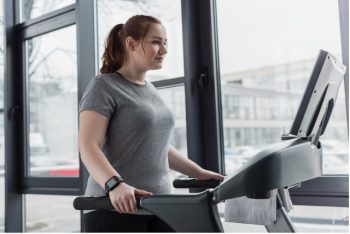
Wind-Up – 30 Beginners’ Gym Exercises
I do hope that this extensive article has been beneficial to you? I will shortly follow it with several others on different aspects of fitness and weight loss, healthy living, sport, retirement in old age, and fitness in the workplace
I’ll also be bringing you extensive information about specific fitness equipment including how it works, where and how it can be obtained, its cost and any available discounts.
Get my latest posts and updates – automatically:
30 Beginners’ Gym Exercises
All my articles are reviewed, updated and extended regularly, so do return as often as you can. Why not sign up for my free update service, then you’ll receive a quick email from me whenever updates are posted, with easy-links directly to the new input. Do it now!
Marie-Louise.

